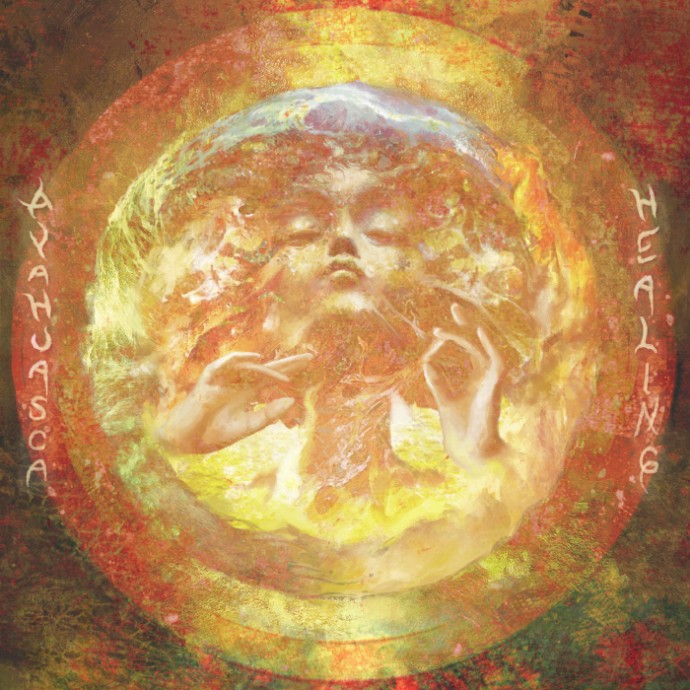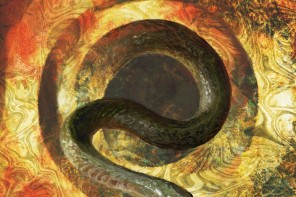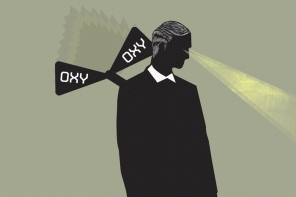A year ago this month, I had my first encounter with the Amazonian psychoactive brew ayahuasca, ‘the vine of the dead’. Two close friends and I made the journey to Pucallpa, Peru, to spend nine days (and partake in four shamanic ceremonies) in the jungle at the Tierra Vida Awakening and Healing Centre. Aside from second-hand testimonials, I had no idea what I was letting myself in for. Ultimately I can say that what unfolded was an incredible and profound psychedelic voyage of such depth that it has since—and most likely until the day that I die—altered my perception of reality.
The ceremonies were very intense; I saw things which I never believed possible. ‘Tripping’ took on a new—very literal—meaning for me. The ayahuasca actually seemed to take me to, or at least show me, different realms and dimensions. There was an overwhelming sense that I was in contact with a vastly superior intelligence to our own. Ayahuasca ceremonies are not just about fuzzy wonderment; they can also be a very dark experience, a gruelling test of the mind and body. I encountered various entities during ceremonies, some who wanted to help me learn, and others more malevolent. One particularly unsettling encounter occurred with an ugly, red-eyed, spitting phantom, tormenting me about my recently deceased grandmother. “She’s rotting in hell,” he told me. At certain points I also feared that I had lost my mind forever. Thoughts about thoughts about thoughts dizzied me to the point of vomiting into my bucket. As I did so, the bottom of the bucket melted into a green and red neon slinky vortex which threatened to suck me into infinity.
Ayahuasca is known as a teacher plant, and it certainly does teach. We were advised prior to ceremonies not to fight the experience, but submit to it as fast and peacefully as we could, lest we suffer the wrath of our stern teacher. This was easier said than done. One does not quite know what one is supposed to submit to straight away, so it is easy to get locked into an unwinnable battle. The result of the inevitable submission, however, is really very beautiful. It is at this moment that the lessons the plant wants you to learn become clear. My lessons were basically these: we are all one, live with love in your heart, and be considerate to all life. Unfortunately mainstream society labels ideas like this as cliché, pseudo-hippy bullshit. Yet when you feel as though your sanity depends on accepting them as liveable truths, they aren’t really so naff.
I could not have more respect for the leap of faith that the people at Tierra Vida have made. Moving from the comfort of the U.S.A. to the Peruvian jungle so that they could facilitate these healing ceremonies and open so many eyes to a deeper reality is genuinely pioneering. Co-founders Jill Levers and Casey Honaker provide a warm, open, and safe space within which to explore and consider the mind-blowing implications of this mystical medicine. They were fantastic hosts and incredibly informative conversationalists. To celebrate the anniversary of our trip, I got back in touch with Casey for a conversation about ayahuasca, shamanism, and psychedelic tourism.
It seems that in the past few years there has been a surge of interest in ayahuasca. Why do you think this is?
Many people today are struggling with various illnesses and societal problems that we don’t have answers to. Western society is now searching through indigenous cultures, trying to salvage what is left of the knowledge that they have. Many ancient cultures found balance with their environments and had techniques for healing and consciousness expansion that they discovered from plant medicines. This renewed surge of interest in the past few years can be seen as an attempt to bring healing to ourselves and the planet.
Could you explain a little about the ingredients and how it is that the combinations came to be discovered?
The ingredients of this concoction are the vine ayahuasca, Banisteriopsis caapi, and the leaf chacruna, or Psycotria viridis. The vine portion of this mixture contains the MAOI, or monoamine oxidase inhibitor, while the leaf portion, chacruna, contains the DMT component, or Di-methyltryptamine. Once they are used in combination, you have an orally active compound that can absorb into the blood through the stomach and intestinal linings. The Shipibo natives have said that the combination was discovered by conversing with the plants. One that is interested in gaining the knowledge of a plant can prepare a daily bath with a certain plant until the spirit of the plant approaches them and offers its knowledge. The spirit of ayahuasca informed the Shipibo that the chucruna leaf was the desired plant to be combined with the vine.
What is the role of the shaman?
The shaman is there to provide stability and offer healing through an ayahuasca ceremony. Shamans can guide the experience of those seeking healing through the use of icaros, or healing songs. These songs can help free up blocked energies that people may be experiencing. Once these energies are freed, purging is often the result. Purging can manifest as vomiting, shaking, crying, using the restroom, etc. This is due to the large amount of energy that is flowing through the individual during ceremony. The shaman can help ease this process and assist with the removal of the blocked energies.
In your opinion, what and where are the realms which an initiate visits during a ceremony?
The realms that an initiate, or let’s say an apprentice, visits during the ceremony are of a higher energetic state. One must first cleanse the body so that it can handle these higher energetic states. We see in nature that when you put more energy into a system, higher-resonant frequencies have more complex structures. The same is true for our bodies and consciousness—as the energy increases, so does our conscious awareness. One discovers that these realms are filled with as much or greater diversity than the one that we perceive at the moment.
Is the ayahuasca tourism boom ecologically sound and sustainable?
It seems that ayahuasca tourism has gone a long way to help preserve aspects of a threatened tradition. This indigenous knowledge is disappearing at an incredible rate, along with the Peruvian Amazon. What I have seen is an increased awareness of the devastation that is taking place, with the influx of shamanic tourism to the jungle. The tourism is also putting money and resources back into the hands of the shamans who are preserving the knowledge that is quickly disappearing from the culture. The unsustainable practices of Western society are too often idolized by developing cultures. We can show our appreciation for indigenous knowledge by supporting traditions that teach us to live in harmony with our environment and ourselves. Placing value on ayahuasca tourism will revive interest amongst indigenous youth for the traditions of their culture. My hope is that this renewed interest will be the drive necessary to turn around the priorities of our unconscious society.
More information and a short documentary film about the ayahuasca awakenings are available here.







